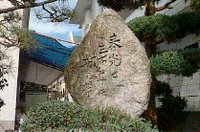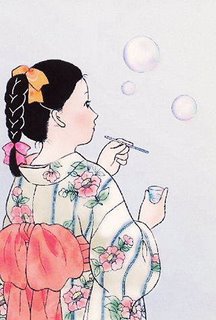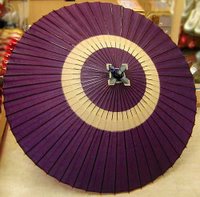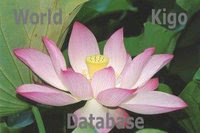:::::::::::::::::::::::::::::::::::::::::::::::::::::::::::::::::::::::::::::::::::::::::::::::::::::
Sparrow (suzume)
***** Location: Japan, worldwide
***** Season: various, see below.
***** Category: animal
*****************************
Explanation
sparrow, suzume 雀 (すずめ)
"voice of the sparrow", sparrows chirping, suzume no koe 雀の声
The word sparrow, if not specified further, refers to the common bird which is with us all year round and is thus not a kigo but a non-seasonal topic.
There are however some kigo related to the sparrow, which we will explore below.
House sparrow, Passer domesticus
Male House Sparrows are easily recognised by their grey crowns and variably-sized black bibs but females might be more difficult. However, nearly all the other dull brown birds with thick, conical bills have streaked rather than plain underparts. Even the otherwise similar Spanish Sparrow is faintly streaked below. Pale Rock Sparrows and Yellow-throated Sparrows are unstreaked below but they also have plain upperparts, quite unlike a House Sparrow.
The only remaining problem species is the Dead Sea Sparrow which looks very similar but is smaller and neater.
. . . CLICK here for Photos !
:::::::::::::::::::::::::::::::::::::::::::::::::::::::::::::::::::::::::::::::::::::::::::::::::::::
SPRING
kigo for mid-spring
harami suzume 孕み雀 (はらみすずめ) pregnant sparrow
..... komochi suzume 子持雀(こもちすずめ)
haramidori 孕鳥(はらみどり)pregnant bird
..... komochidori 子持鳥(こもちどり)
. はらみ餅 harami Mochi rice cake amulets .
kigo for late spring
baby sparrows, little sparrows, suzume no ko 雀の子
suzumeko 雀子(すずめこ)
kosuzume 、小雀(こすずめ)
suzume no hina 雀の雛(すずめのひな)

kisuzume, ki suzume 黄雀(きすずめ)"yellow sparrow"
koojaku こうじゃく【黄雀】, oojaku
The beak of the small bird is still yellow inside.
oya suzume 親雀(おやすずめ)sparrow parents
haru no suzume春の雀(はるのすずめ)sparrow in spring
................................................................................
nest of a sparrow, suzume no su 雀の巣
kigo for all spring
:::::::::::::::::::::::::::::::::::::::::::::::::::::::::::::::::::::::::::::::::::::::::::::::::::::
SUMMER
reed warbler : yoshi suzume 葭雀
reed-plain warbler : yoshihara suzume 葭原雀
bull-rush-plain warbler : ashihara suzume 葦原雀
The above three are variations of the "reed cutter warbler", yoshikiri 葭切, Acrocephalus species.
More kigo about the reed warbler !
xxxxxxxxxxxxxxxxxxxxxxxxxxxxx
suzume no tago 雀の担桶 (すずめのたご) sparrow eggs
..... suzume no shooben tago 雀の小便担桶(すずめのしょうべんたご)
suzume no tango 雀のたんご(すずめのたんご)
suzume no tamago 雀の卵(すずめのたまご)
suzume no tago 雀の田子
:::::::::::::::::::::::::::::::::::::::::::::::::::::::::::::::::::::::::::::::::::::::::::::::::::::
AUTUMN
sparrows in the rice fields,
"rice sparrows" inasuzume 稲雀
Refers to sparrows who have come to autumn rice-fields to glean loose grains from the ground, or pluck them from the plants before harvest.
MORE
SPARROWS in AUTUMN KIGO
:::::::::::::::::::::::::::::::::::::::::::::::::::::::::::::::::::::::::::::::::::::::::::::::::::::
late WINTER
kansuzume, kan suzume 寒雀 (かんすずめ)
sparrow in the cold
kogoesuzume 晩冬 凍雀(こごえすずめ)freezing sparrow
fukurasuzume ふくら雀(ふくらすずめ) "inflated" sparrow, plump sparrwo
puffed up the feathers to keep warm
. Plump sparrow and Daruma .
Folk Toys of Japan
:::::::::::::::::::::::::::::::::::::::::::::::::::::::::::::::::::::::::::::::::::::::::::::::::::::
NEW YEAR
first sparrow : hatsu suzume 初雀
To see a sparrow on the first day of the New Year is quite auspicious. It makes you feel cheerful and happy.
初雀翅をひろげて降りにけり
hatsu suzume hane o hirogete ori ni keri
first sparrow -
he opens his wings
and comes down
Kijoo 鬼城 (Tr. Gabi Greve)
Have a look here !
:::::::::::::::::::::::::::::::::::::::::::::::::::::::::::::::::::::::::::::::::::::::::::::::::::::
A Problem
In the "Haiku Handbook" by Higginson, sparrow is listed as a spring kigo.
But that seems a misunderstanding.
The haiku in question quoted on page 29 reads in the last line
sparrows' voices (susume no koe), which is most probably a mistaken translation or misprint for the kigo "baby sparrows (susume no ko)", a spring kigo indeed.
"susume no koe", with six beats, is not suitable for the last line of a haiku, which has 5 beats in Japanese.
In the haiku quoted on page 108, the kigo is
atatakasa, warmness, for spring,
and suzume, the sparrow is not the kigo here at all, but a non-seasonal topic.
In the "Haiku World", Higginson quotes the sparrow as an all year non-seasonal topic.
Voices of Animals -
With the full quote of the haiku in question
Read a comment by Bill Higginson about the SPARROW as kigo, with resprect to the above problem.
September 2006
*****************************
Worldwide use
Sparrows in New Zealand
They seem to prefer the company of Homo sapiens and have moved along with us as we have developed, built shelters and cultivated crops, something which their scientific name, Passer domesticus, reveals. Sparrow, their common name, is much the same in every European language, being variations of the old Teutonic sparwa, from sper … to quiver.
Read a lot more information:
http://www.nzbirds.com/Sparrow.html
::::::::::::::::::::::::::::::::::::::::::::::::::::::::::::::::
Uruguay
Some links in Spanish about GORRIÓN
© Juan Pedro Paz-Soldán
http://www.avesdelima.com/gorrion_americano.htm
http://www.avesdelapatagonia.com.ar/aaa_Inicio_marco.htm
http://www.avesdelima.com/gorrion_europeo.htm
http://www.fotosaves.com.ar/Passeriformes/Ploceidae/FotosPloceidae.html
*****************************
Things found on the way
. March 20th - World Sparrow Day .
Mobile phones blamed for sparrow deaths
So this day is also NO CELLPHONE DAY
*****************************
HAIKU
Some sparrow haiku from Issa
suzumego ga naka de naku nari kome fukube
the baby sparrow
chirps inside
the rice gourd
Issa
http://cat.xula.edu/issa/searchissa.php?haiku_id=131.10a
Issa is quite famous for his many haiku about Sparrows.
David Lanoue lists 127 in his Issa Archives.
http://webusers.xula.edu/dlanoue/issa/index.html
Basho-ki ya hato mo suzume mo kyaku mekasu
Basho's Death-Day--
pigeons and sparrows
in their Sunday best
Issa
Haiga by Sakuo Nakamura
http://blog.livedoor.jp/sakuo3903/archives/18897963.html
:::::::::::::::::::::::::::::::::::::::::::::::::::::::::::::::::::::::::::::::::::::::::::::::::::::
viento estival
los pequeños gorriones
luchan y luchan
summer wind -
the little sparrows
struggle on
Russian translation:
летний ветер --
борются с ним
крошки-воробьи
Haiga by Origa (Olga Hooper)
http://www.livejournal.com/users/origa/
Carlos' Haiku won the first prize of the Second Calico Cat bilingual haiku contest of Origa.
http://www.livejournal.com/users/origa/49491.html#cutid1
.. .. ..
duro papeleo
afuera persiguiendose
gorriones
> > > hard paperwork -
> > > outside chasing one another
> > > sparrows
dark clouds --
the little sparrow
urges his flight
Carlos Fleitas from Uruguay tells us this:
Sparrows are very common here. You can find them everywhere. Some people dislike them, and find them annoying. Sometimes if you have a window opened they may even enter your house! It has never happened to me, although i can see them everyday...
xxxxxxxxxxxxxxxxxxxxxxxxxxxxxxxxxx
park bench
an old man shares his lunch
with some sparrows
Max Verhart
http://shiki1.cc.ehime-u.ac.jp/~shiki/kukai/kukai77-2.html
xxxxxxxxxxxxxxxxxxxxxxxxxxxxx
How soon they're gone -
the bread crumbs and the sparrows
that I began to sketch
(Cicada, v.3, #4)
Hard frost -
a sparrow in my son's
cupped hands
(World Haiku Review, October, 2003)
Frosty day -
finches at the feeder
let a sparrow in
Zhanna P. Rader
Read more of Zhanna's Sparrow Haiku here:
http://groups.yahoo.com/group/happyhaiku/message/1449
:::::::::::::::::::::::::::::::::::::::::::::::::::::::::::::::::::::::::::::::::::::::::::::::::::::
young camel foot tree --
first sparrow has found
its nesting site
This bauhinia grows in my pocket-handkerchief-sized front garden, where I planted the seed from a neighbour's garden some years back.
This morning, looking out of my window with pleasure, I found a sparrow sitting on one of its branches, nest-building material in beak, checking the place out. Surely, it must be the coming-of-age of a tree if it is big enough to be considered by a bird for a nest!
Isabelle Prondzynski, Kenya
Camel's foot tree, Bauhinia purpurea

:::::::::::::::::::::::::::::::::::::::::::::::::::::::::::::::::::::::::::::::::::::::::::::::::::::
beside the sparrow
only the fragrance
of a lilac blossom
- Shared by Sandi Pray -
Joys of Japan, 2012
:::::::::::::::::::::::::::::::::::::::::::::::::::::::::::::::::::::::::::::::::::::::::::::::::::::
On the thorny branch
A sparrow sits ~ not thinking
Of migration

- Shared by Res John Burman -
Joys of Japan, 2012
*****************************
Related words
***** Reed warbler (yoshi suzume, gyoogyooshi)
The BIRD Saijiki with all kigo !
:::::::::::::::::::::::::::::::::::::::::::::::::::::::::::::::::::::::::::::::::::::::::::::::::::::
suzumegakure 雀隠れ (すずめがくれ) "enough to hide a sparrow"
when plants are just beginning to grow
muresuzume 群雀 (むれすずめ) Caragana sinica
lit. "a flock of sparrows"
. Plants in Spring .
:::::::::::::::::::::::::::::::::::::::::::::::::::::::::::::::::::::::::::::::::::::::::::::::::::::
[ . BACK to DARUMA MUSEUM TOP . ]
[ . BACK to WORLDKIGO . TOP . ]
:::::::::::::::::::::::::::::::::::::::::::::::::::::::::::::::::::::::::::::::::::::::::::::::::::::




























